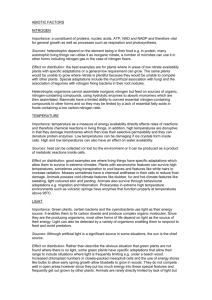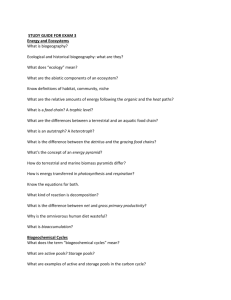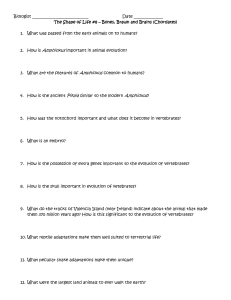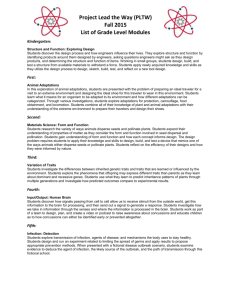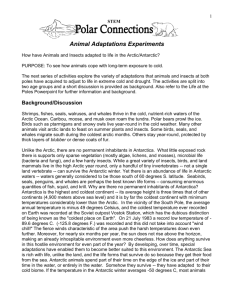How animals adapt to cold water and high pressure
advertisement
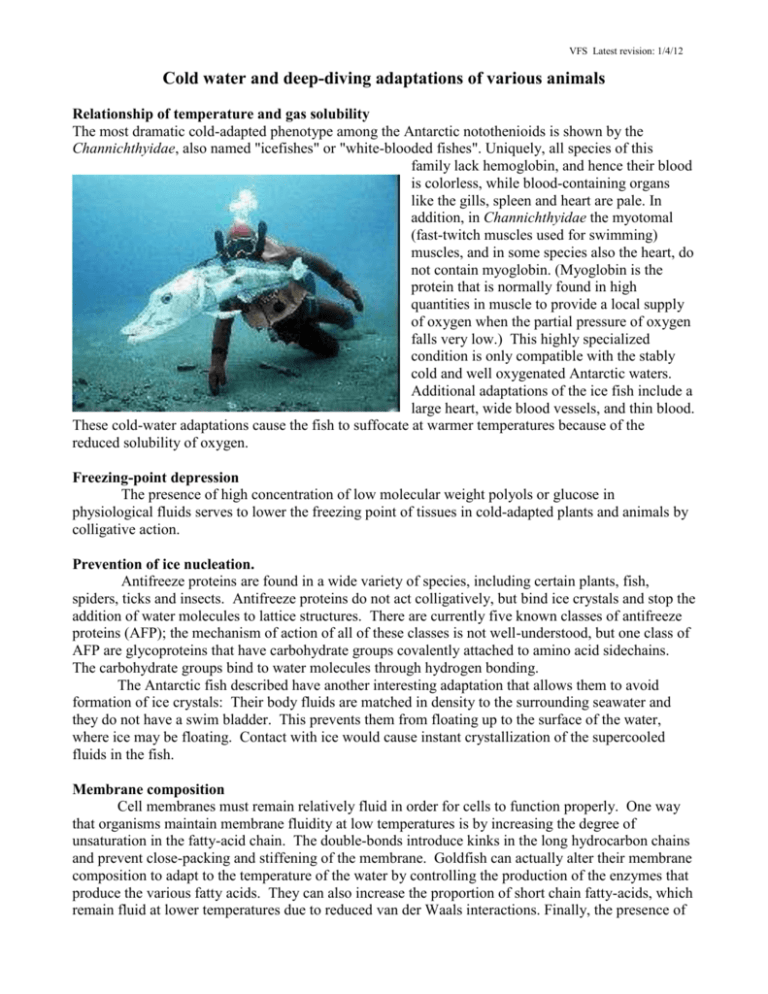
VFS Latest revision: 1/4/12 Cold water and deep-diving adaptations of various animals Relationship of temperature and gas solubility The most dramatic cold-adapted phenotype among the Antarctic notothenioids is shown by the Channichthyidae, also named "icefishes" or "white-blooded fishes". Uniquely, all species of this family lack hemoglobin, and hence their blood is colorless, while blood-containing organs like the gills, spleen and heart are pale. In addition, in Channichthyidae the myotomal (fast-twitch muscles used for swimming) muscles, and in some species also the heart, do not contain myoglobin. (Myoglobin is the protein that is normally found in high quantities in muscle to provide a local supply of oxygen when the partial pressure of oxygen falls very low.) This highly specialized condition is only compatible with the stably cold and well oxygenated Antarctic waters. Additional adaptations of the ice fish include a large heart, wide blood vessels, and thin blood. These cold-water adaptations cause the fish to suffocate at warmer temperatures because of the reduced solubility of oxygen. Freezing-point depression The presence of high concentration of low molecular weight polyols or glucose in physiological fluids serves to lower the freezing point of tissues in cold-adapted plants and animals by colligative action. Prevention of ice nucleation. Antifreeze proteins are found in a wide variety of species, including certain plants, fish, spiders, ticks and insects. Antifreeze proteins do not act colligatively, but bind ice crystals and stop the addition of water molecules to lattice structures. There are currently five known classes of antifreeze proteins (AFP); the mechanism of action of all of these classes is not well-understood, but one class of AFP are glycoproteins that have carbohydrate groups covalently attached to amino acid sidechains. The carbohydrate groups bind to water molecules through hydrogen bonding. The Antarctic fish described have another interesting adaptation that allows them to avoid formation of ice crystals: Their body fluids are matched in density to the surrounding seawater and they do not have a swim bladder. This prevents them from floating up to the surface of the water, where ice may be floating. Contact with ice would cause instant crystallization of the supercooled fluids in the fish. Membrane composition Cell membranes must remain relatively fluid in order for cells to function properly. One way that organisms maintain membrane fluidity at low temperatures is by increasing the degree of unsaturation in the fatty-acid chain. The double-bonds introduce kinks in the long hydrocarbon chains and prevent close-packing and stiffening of the membrane. Goldfish can actually alter their membrane composition to adapt to the temperature of the water by controlling the production of the enzymes that produce the various fatty acids. They can also increase the proportion of short chain fatty-acids, which remain fluid at lower temperatures due to reduced van der Waals interactions. Finally, the presence of VFS Latest revision: 1/4/12 cholesterol is an important factor in maintaining membrane fluidity at low temperatures: because of its rigid, planar structure, insertion of cholesterol in a membrane prevents close packing of saturated fatty acid chains, ensuring that the chains remain mobile. High-pressure adaptations in the sperm whale Sperm whales can dive to depths of 10,000 feet and stay submerged for an hour or more. At these extreme depths and resulting high pressures, nitrogen gas readily dissolves in the blood. As the animal returns to the surface, the nitrogen gas will become less soluble and there is the danger that it will be released from the blood in gas bubbles. Although human divers must take special precautions, such as timed decompression, to avoid the painful and possibly fatal condition known as “the bends,” sperm whales and other deep-diving mammals have adaptations that allow them to prevent formation of the large nitrogen bubble that cause joint and muscle pain and other symptoms of decompression sickness. Three adaptations are particularly useful: 1) the retia mirabilia, a network of tiny blood vessels that filter out nitrogen bubbles before it the blood enters the brain; 2) a rigid trachea that is largely gas impermeable, preventing nitrogen from entering the blood, and 3) a flexible ribcage that allows the lungs to collapse easily at high pressure, forcing the air out through the rigid, non-absorbing trachea. Other interesting adaptations that allow sperm whales to perform deep dives are shown below.





